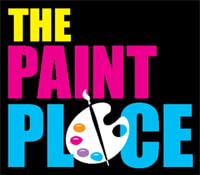Color harmony is absolutely essential to creating aesthetically pleasing art, but many beginning painters have no idea exactly what it is, or even why it matters. Yet at its heart, color harmony is a relatively simple tool that can boost your apparent skill level quickly. Here’s what you should know.
The Color Wheel
Color harmony is based on the color wheel, a circular diagram of colors. The primary colors (red, blue, and yellow) are set at points equidistant from each other. The secondary colors (purple, green, and orange, made by mixing the primary colors) are located halfway between the relevant primary colors. The tertiary colors are blends of one primary and one secondary color, and fill in the remaining spaces. Theoretically, every possible color could be included in the color wheel, although commercially available wheels typically include approximately 12 colors.
The Key Color
The key color is the main color that you choose for your artwork. It could be a primary, secondary, or tertiary color, but it is the one that you want to accent or focus on throughout your piece. Examples include a blue sky, a green forest, or an orangey-red volcano.
Harmonious Color Schemes
Once you have identified your key color, it is easy to identify harmonious colors using a color wheel. There are a few different recommended schemes, which can be combined for an even more layered result.
Complementary: Complementary colors are directly opposite each other on the wheel. They are visually arresting, but can be jarring, so it is best to use them sparingly for an accent or pop.
Analogous: Analogous colors are located on either side of the key color along the color wheel. They tend to represent color schemes that are found in nature, and are visually serene. However, overuse of analogous colors can make your painting seem monochromatic, so avoid too much reliance on them unless that is the feel you are aiming for.
Triadic: Triadic colors are equally spaced around the color wheel (like the primary colors are). This color scheme can be quite elegant when one color is allowed to dominate, and the others are used as accents. However, it can make your painting seem visually muddled if you rely too heavily on this scheme.
Split-Complementary: Split-complementary color schemes use the key color with the colors on either side of its complement, rather than the complementary color itself. This is a safer choice than complementary colors for beginning artists, because it provides much of the same effect without the harshness of a true complementary scheme.
Tetradic: Tetradic, or rectangular, color schemes use the four colors surrounding a complementary pair (which themselves make two complementary pairs). This allows for a great deal of subtlety and interesting blending effects.
Square: A square color scheme is a variation of a triadic scheme, using four evenly-spaced colors instead of three. This provides the opportunity for each color to stand out, but it is best to let your selected key color dominate.
Color Temperatures
To create harmony, it is important to pay attention to your use of warm and cool colors. The warm colors are on the red, yellow, and orange side of the color wheel. They are fiery, intense, and energetic. The cool colors are on the blue, purple, and green side of the wheel. They are watery, soothing, and calm. When planning your color scheme, consider the mood that you want your painting to evoke, and choose a blend of temperatures that reflect that mood. Black, white, and grey are neutral temperature colors.
Shades, Tints, and Tones
Shades, tints, and tones should also be taken into account when planning your color scheme. Shades are created by adding black to the original hue. Tints are created when white is added, while adding grey creates tones. Remember that when you change the hue, the color remains in the same place on the color wheel. This means that you can create rich, highly layered color schemes using only a few colors but a variety of shades, tints, and tones.

